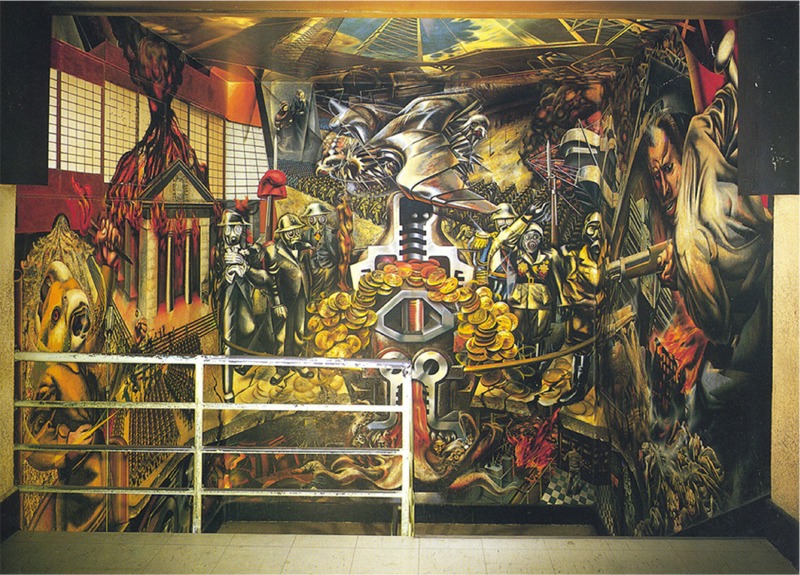David Alfaro Siqueiros
One characteristic that nearly all Latin American Artists could relate to was the feeling of revolution. Unfortunately, this feeling extended far beyond the ideals of art, and into bloody battles waged for their countries. David Alfaro Siqueiros, a Mexican muralist, was affected by the bloodshed and violence he witnessed firsthand. Never as famous as the other Muralists, Rivera and Orozco, Siqueiros instead never compromised on his ideals and was willing to die for what he believed in, a testament he took with him to war several times and to jail even more.
In one of his most expansive and symbolic murals Portrait of the Bourgeoisie, Siqueiros painted the walls of the Electrical Workers Union Building. The mural extends down several flights through a staircase, each landing becoming a new vantage point and a new painting in itself. The theme of capitalism, greed, the lies of politicians, and the nameless horror of war reverberate with great power in those echoed halls. Soldiers march to fight, being talk to by a Politician who simply Parrots the speeches he is given (represented by the politician’s avian head), and the politician is even still more a puppet, controlled by others. Mexican soldiers turn their guns on their own country men, with only but a glimmer of hope shining at the buildings ceiling. In this aspect, the Mural attempted to bring the painting from the Gallery, to the people. In the places where the people commute, gather, or work, the mural acts as a visual storybook of Latin American History, allowing those who view it a more personal grasp into not only the art, but their own past.

